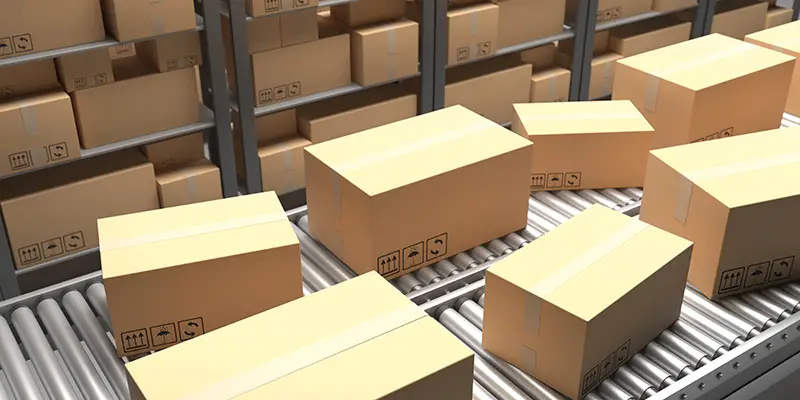Click here to get this post in PDF
Material spillage is a widespread issue in most conveyor systems. This is when the conveyed material falls from the conveyor belt’s carry side, mainly around the load zone. Spillage can also occur at any point along the belt’s line which can lead to several other problems. Drop hazards, high dust counts, and risk of contamination are some of the issues associated with conveyor spillage. Material handling plants know-how material spillage can negatively impact their operations. To deal with such issues, Industries must use the Side Wall Conveyor Belt that runs around the conveyor system. It is used to improve efficiency in a variety of lines and reduce material spillage. For example, if a production line feeds into a product line, the belt can help to separate out product from the mix.
The conveyed material often falls underneath or beside the conveyor. This can accumulate over time and present trip hazards for employees. When the material hits the ground, its fines increase airborne dust and contaminate other conveyed materials (i.e. in ship loader facilities where more than one material is conveyed). Over time, the spilled material can wear out idlers, components, and the structural integrity of the conveyor system. This can result in decreased efficiency and will negatively impact operations.
When the spilled material accumulates, the need for cleanups and replacement parts increase. This means costly labour at the expense of reduced work efficiency. Effective spillage control is crucial to an efficient conveyor system and today, we’ll be tackling how to manage conveyor spillage properly.
Impact Beds
Material that spills in bulk solids can damage the conveyor’s belt, its idlers, and its overall structure. One way to mitigate this is by using impact beds. Impact beds are placed underneath the belt where the impact zone is located and its primary function is to absorb the impact of the fugitive material. This gives the belt the support that it needs to reduce material spillage as much as possible.
There are tendencies where sharp edges of material pierce through the belt. Impact beds reduce the likelihood of belt punctures and also help stabilise the belt at the loading point to effectively seal it against spillage.
Belt support
Building an efficient conveyor system relies heavily on good belt support. The belt must be sag-free and stable during operation to reduce the chances of conveyor spillage. The beltline must travel in a straight and steady path and achieve this, proper belt support must be implemented. A conveyor belt that has no support is prone to spillage at the transfer point and is also susceptible to developing gaps between the belt and the skirting system, causing dust and fines to escape.
The fugitive material can accelerate wear and tear on bearings and the belt itself when the material gets stuck at the pinch point. To reduce the dust count and minimise the risk of spillage, consider implementing strong belt support by using ESS rollers and gas sealing support systems.
Belt cleaning systems
Conveyor belt cleaning systems are one of the most effective ways to combat material spillage. Oftentimes material fines get stuck on the conveyor belt once it passes the unloading point. The residual material gets carried back to the conveyor’s return side and falls off at different areas of the conveyor belt. This is known as carryback and it can negatively affect operations and present hazards to personnel.
Carryback decreases the lifespan of the components and causes buildup on the idlers. This leads to belt misalignment and further increases the risk of conveyor spillage. Installing belt cleaning systems are effective at removing fugitive material that has been stuck on the belt’s return side. These systems are available in many different types, but the most commonly used ones are conveyor scrapers.
Conveyor scrapers, as the name implies, scrape off fugitive material and reduce carryback for a more efficient conveyor system operation. These come in three main types, namely primary cleaners, secondary cleaners, and ploughs (also known as return belt cleaners).
Sealing systems
Aside from belt cleaning systems, sealing systems are also imperative for proper conveyor spillage management. A combination of skirt boards, edge seals, and wear liners are required to have an effective seal that minimises material spillage. The seal should begin from the loading zone and extend to the end of the settling zone for maximum spillage control.
Belt alignment
The alignment of the belt should be taken into consideration when implementing conveyor spillage procedures. Ideally, the belt should stay in perfect alignment during operations without the tendency of wandering. When the belt mistracks, material spillage can ensue. Belt tracking is the process wherein the conveyor belt is configured to travel as centerline as possible to minimise the escape of the conveyed material.
It’s important to check the belt alignment from time to time so that it would remain centrally loaded. Using belt trackers will go a long way towards ensuring perfect belt alignment under any conditions.
Routine maintenance
All that’s left now is to conduct routine maintenance and inspect the components for any material buildup. Your mining equipment supplier will be able to make suggestions and help advise too. Your conveyor system will benefit significantly when you know how to properly manage conveyor spillage.
We earn a small commission if you shop through the link below
Image source: elements.envato.com


[…] You may also like: Proper Management of Conveyor Spillage […]